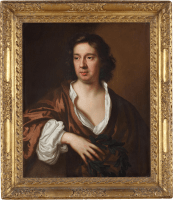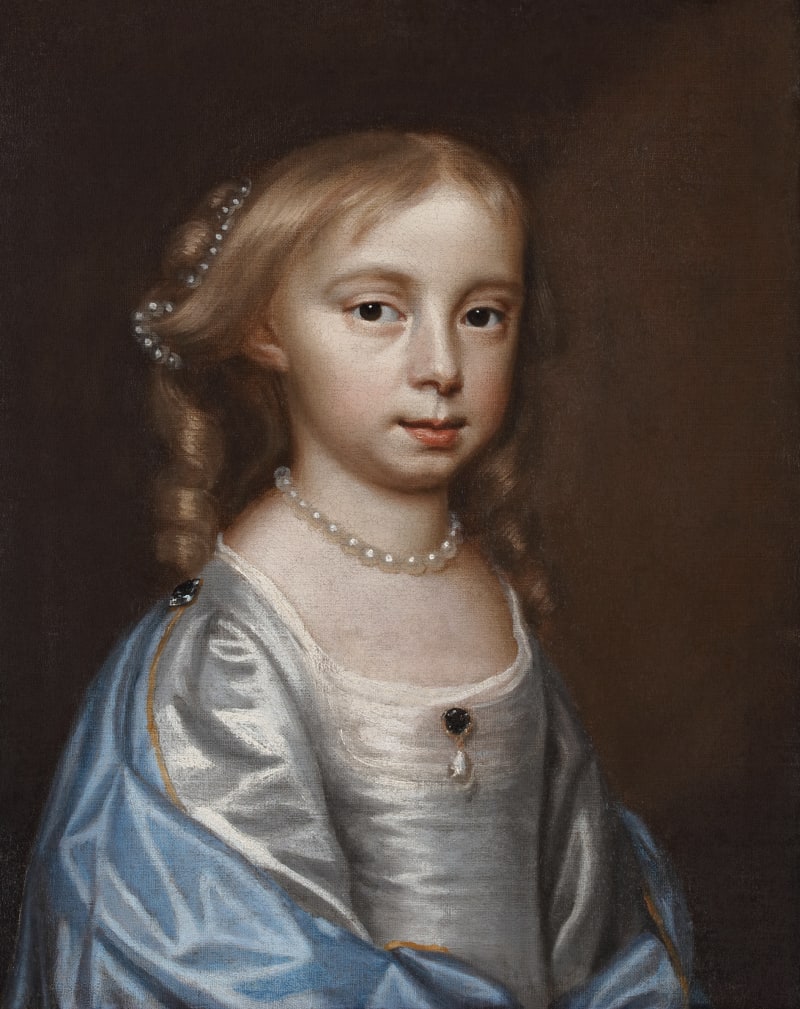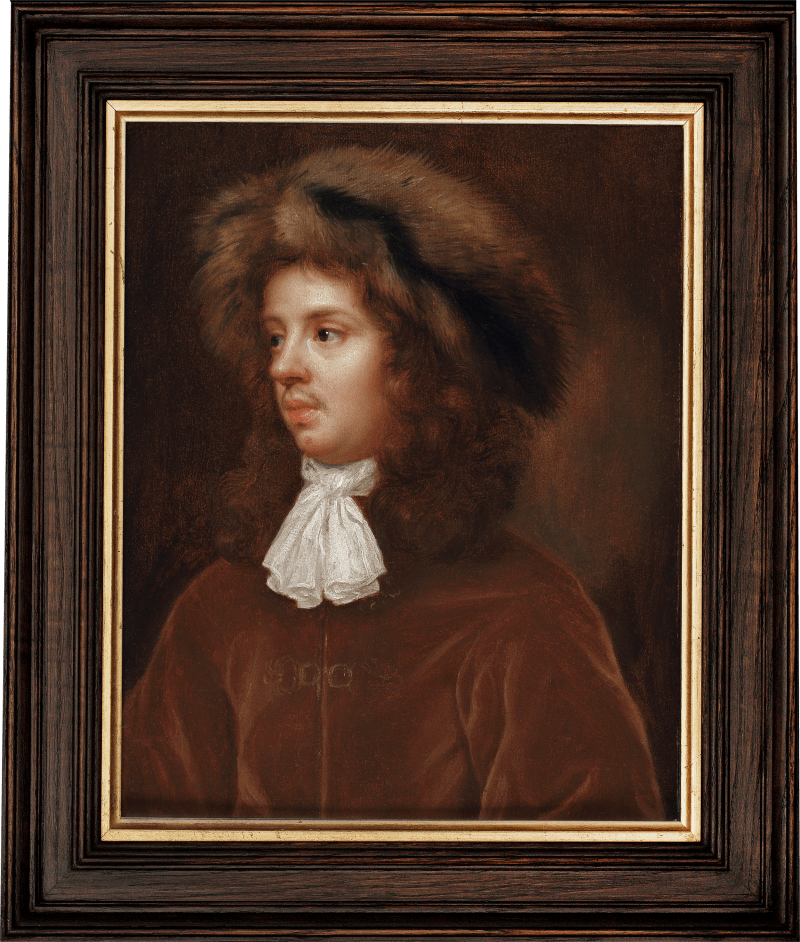Beale’s portraits of her husband Charles are undeniably amongst her most expressive works of art. No other British artist of the period appears to have been so dedicated to capturing their spouse, and Charles’ ageing likeness can be clearly traced throughout her oeuvre.[1] These depictions vary in guise and characterisation, from the semi-theatrical to the more reserved. In this instance the open shirt, together with laurel leaves, invokes poeticism and passionate feeling.
This is amongst Beale’s latest known depictions of her husband and emphasizes their enduring partnership, both professionally and matrimonially. Despite the availability of ready-primed canvases at this time, Charles continued to source, prime, cut and stretch his wife’s canvases, even at the zenith of her career.[2] Here the support is bed ticking, in common with many of Beale’s other family portraits.
In contrast to the prevailing formality and social conformity of most contemporaneous portraiture, Beale’s portraits of her family offer a rare sense of collaboration and...
Beale’s portraits of her husband Charles are undeniably amongst her most expressive works of art. No other British artist of the period appears to have been so dedicated to capturing their spouse, and Charles’ ageing likeness can be clearly traced throughout her oeuvre.[1] These depictions vary in guise and characterisation, from the semi-theatrical to the more reserved. In this instance the open shirt, together with laurel leaves, invokes poeticism and passionate feeling.
This is amongst Beale’s latest known depictions of her husband and emphasizes their enduring partnership, both professionally and matrimonially. Despite the availability of ready-primed canvases at this time, Charles continued to source, prime, cut and stretch his wife’s canvases, even at the zenith of her career.[2] Here the support is bed ticking, in common with many of Beale’s other family portraits.
In contrast to the prevailing formality and social conformity of most contemporaneous portraiture, Beale’s portraits of her family offer a rare sense of collaboration and intimacy. Scholars often note the presence of Charles’s warts, which are depicted in almost all Beale’s portraits of him, a detail that has sometimes facilitated his identification. Such is the case with this portrait, which was once thought to depict the Poet Laureate and playwright Thomas Shadwell (c. 1642–1692). The laurel wreath in Charles’s right hand potentially perpetuated this misinterpretation. Considering Charles’ profound integration within the seventeenth-century London artistic community, the laurel wreath may also be a nod to his active engagement in the vibrant cultural scene of the era.
[1] Helen Draper 2020, p.113.
[2] Ibid., p.188.













